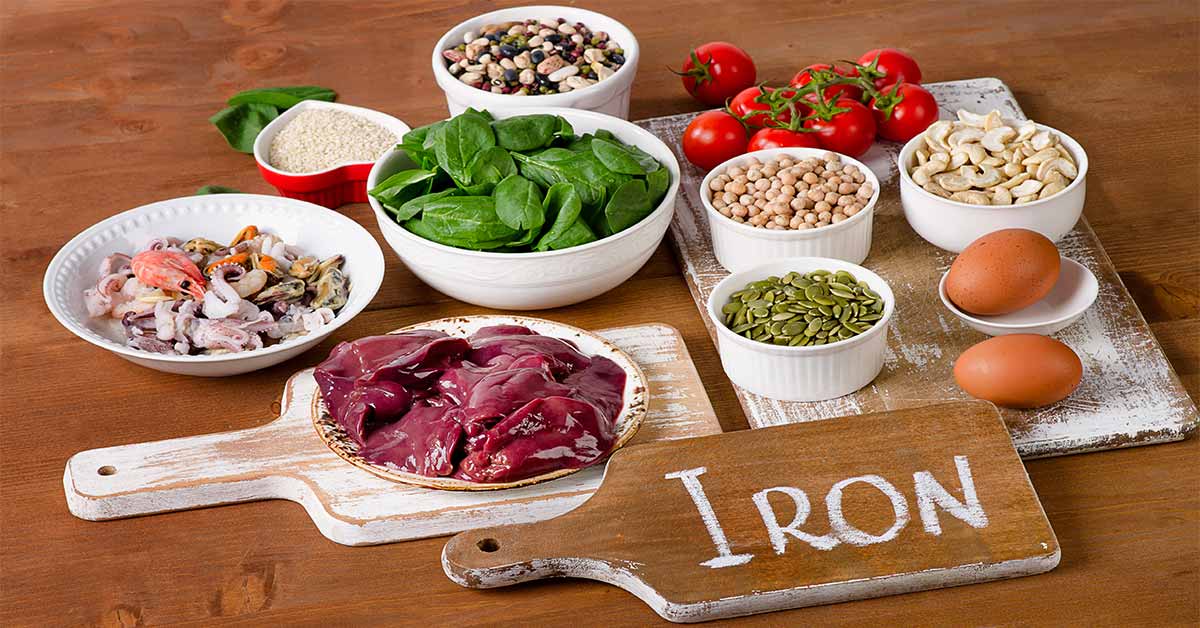Spinach may not give you superhuman strength to fight off villains like Popeye’s nemesis Bluto, but this leafy green and other foods containing iron can help you fight a different type of enemy — iron-deficiency anemia.
Iron-deficiency anemia, the most common form of anemia, is a decrease in the number of red blood cells caused by too little iron. Without sufficient iron, your body can’t produce enough hemoglobin, a substance in red blood cells that makes it possible for them to carry oxygen to the body’s tissues. As a result, you may feel weak, tired, and irritable.
About 20% of women, 50% of pregnant women, and 3% of men do not have enough iron in their body. The solution, in many cases, is to consume more foods high in iron.
How Your Body Uses Iron in Food
When you eat food with iron, iron is absorbed into your body mainly through the upper part of your small intestine.
There are two forms of dietary iron: heme and nonheme. Heme iron is derived from hemoglobin. It is found in animal foods that originally contained hemoglobin, such as red meats, fish, and poultry (meat, poultry, and seafood contain both heme and non-heme iron). Your body absorbs the most iron from heme sources. Most nonheme iron is from plant sources.
Iron-Rich Foods
Very good sources of heme iron, with 3.5 milligrams or more per serving, include:
Continue Reading Below
you might like
- 3 ounces of beef or chicken liver
- 3 ounces of clams or mussels
- 3 ounces of oysters
Good sources of heme iron, with 2.1 milligrams or more per serving, include:
- 3 ounces of cooked beef
- 3 ounces of canned sardines, canned in oil
Other sources of heme iron, with 0.6 milligrams or more per serving, include:
- 3 ounces of chicken
- 3 ounces of cooked turkey
- 3 ounces of ham
- 3 ounces of veal
Other sources of heme iron, with 0.3 milligrams or more per serving, include:
- 3 ounces of halibut, haddock, perch, salmon, or tuna
Iron in plant foods such as lentils, beans, and spinach is nonheme iron. This is the form of iron added to iron-enriched and iron-fortified foods. Our bodies are less efficient at absorbing nonheme iron, but most dietary iron is nonheme iron.

